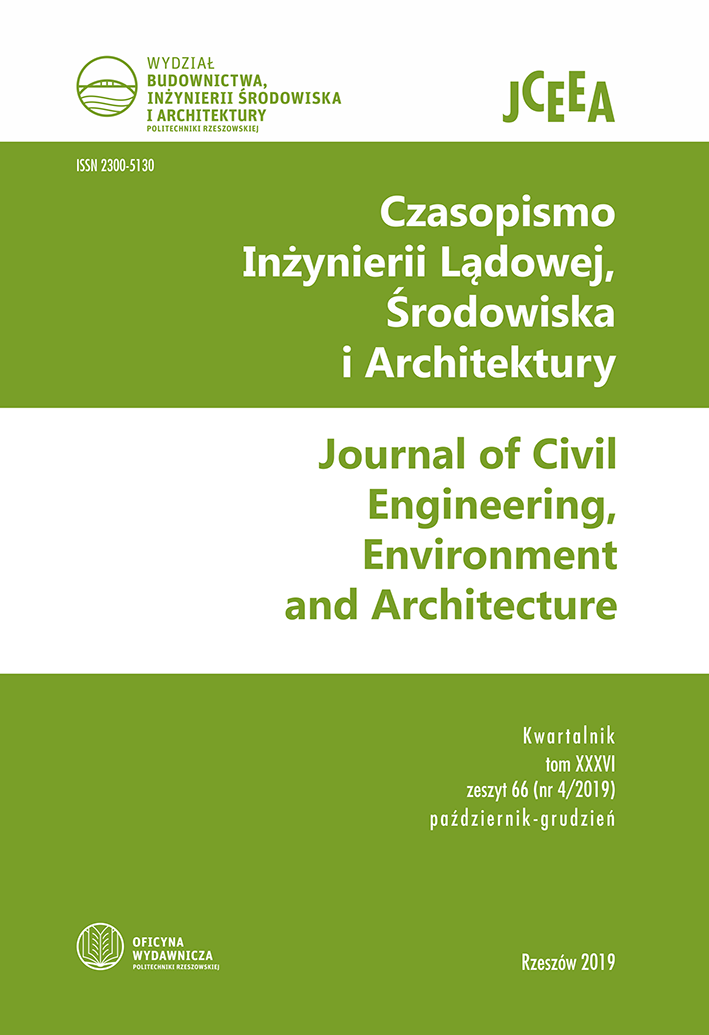Abstract
The issue of ensuring the construction of materials and products, necessary quality characteristics and durability, is associated with the solution of many problems arising both in the construction industry enterprises and in the conditions of a construction site. Most of these (construction-technological) problems are solved due to the rational choice of raw materials, changes in the ratio between the main components, as well as production modes. The method of solving such problems assumes simultaneous consideration of many factors (composition, consumption of components, formation conditions, hardening, etc.) and providing many parameters (workability, strength, frost resistance, water resistance, etc.), which in practice is difficult to implement by traditional methods of experimentation because of high labor intensity of the work and the need for complex analysis. The article considers using methods of system analysis and mathematical planning of experiments in the study of building materials quality. Methods of obtaining mathematical models of various types, their interpretation and analysis, as well as the basic principles of using system analysis for solving the problems of building materials technology are presented. The technique of mathematical planning of experiments is presented. The main types of tasks solved with this method are analyzed, optimization criteria for solving problems of concrete technology are formulated. Methods for constructing linear and nonlinear models, their statistical analysis, and typical plans for carrying out experiments are presented.
References
Dvorkin L., Dvorkin O.: Basics of Concrete Science, Stroybeton, St.-Petersburg 2006.
Voznesenskiy V., Lyashenko Т., Ogarkov B.: Numerical Methods for Solving Problems of Construction Technology Using Computers, Vyshcha Shkola, Kyiv 1989.
Dvorkin O.: Design of Concrete Compositions. Basic Theory and Methodology. NYVGP, Rovno 2003.
Dvorkin L.: Optimal Design of Concrete Compositions, Vyshcha Shkola, Lvov 1981.
Dvorkin L., Dvorkin O., Ribakov Y.: Mathematical Experiments Planning in Concrete Technology, Nova Science Publishers, New York 2011.
Debska B.J., Dobrowolski L., Debska B.: Experiment-design Methods in Innovative Polymer Material Planning, Journal of Applied Polymer science, V.135, Issue 46, December 2018.
Ferrandiz-Mas V., Sarabia L., Ortiz M., Cheeseman C., García-Alcocel E.: Design of Bespoke Lightweight Cement Mortars Containing Waste Expanded Polystyrene by Experimental Statistical Methods, Materials & Design, Vol. 89, 2016, pp. 901–912.
Mohammed Sonebi: Medium Strength Self-compacting Concrete Containing Fly Ash: Modelling Using Factorial Experimental Plans, Cement and Concrete Research, Vol. 34, Issue 7, July 2004, pp. 1199–1208.
Fomina E., Kozhukhova N., Sverguzova S., Fomin A.: Application of Mathematical Model Methods for Optimization Tasks in Construction Materials Technology, Journal of Physic: Conference series 1015 (5), 2018.
Dvorkin L., Dvorkin O., Ribakov Y.: Multi-Parametric Concrete Compositions Design, Nova Science Publishers, New York 2013.
Dolgov N., Zubrets’ka N., Buketov A., Stukhlyak P.: Use of the Method of Mathematical Experiment Planning for Evaluating Adhesive Strength of Protective Coatings Modified by Energy Fields, Strength of Materials, Vol. 44(1), January 2012, pp. 81–86.

